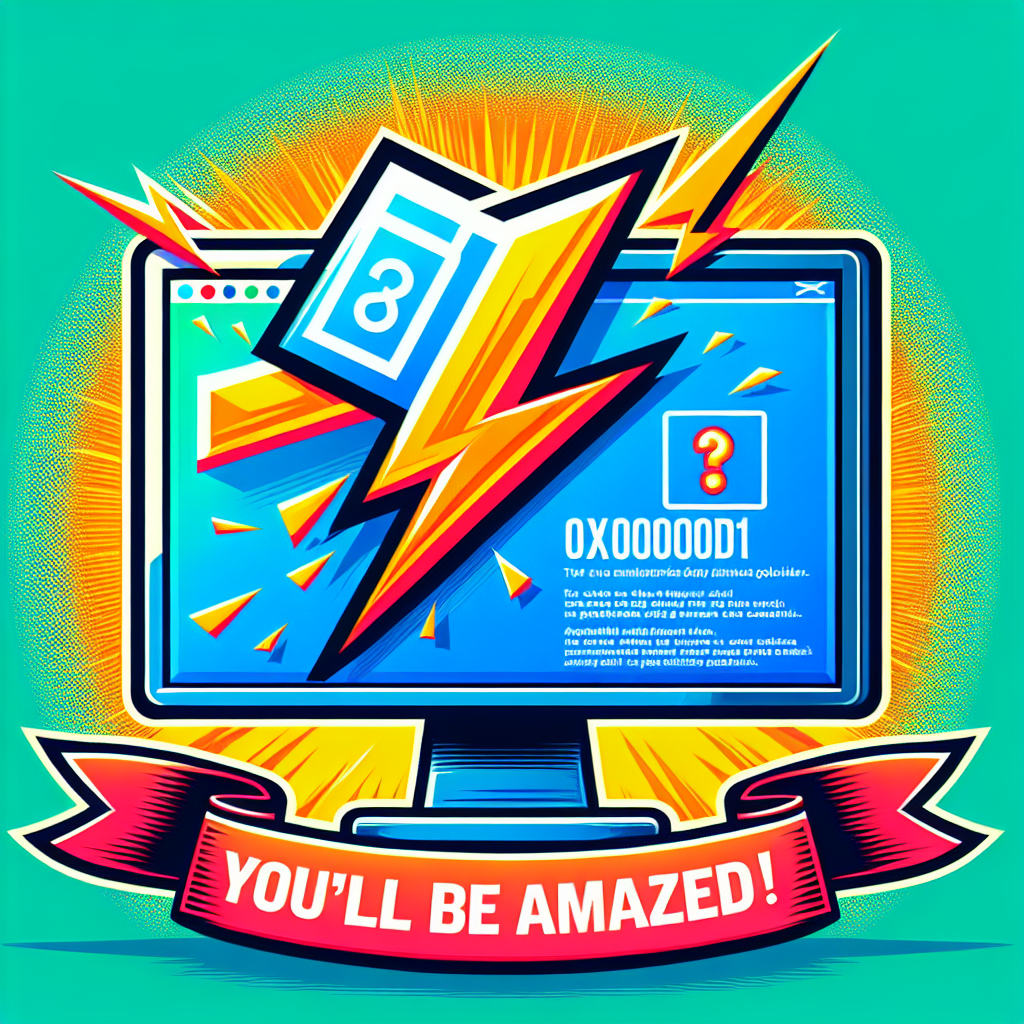As a seasoned tech expert, I regularly encounter a myriad of issues from programming bugs to server mishaps. One particular error that I encountered recently was the dreaded Error 0x000000D1. This error can be perplexing and frustrating, but fear not, because I am here to guide you through the resolution process step by step.
Introduction
Error 0x000000D1, also known as the DRIVER_IRQL_NOT_LESS_OR_EQUAL error, is a common Windows stop code error that generally points to driver problems. This error typically manifests as a Blue Screen of Death (BSOD) and can significantly disrupt your work. However, with the right approach, this issue can be efficiently resolved.
Common Causes of Error 0x000000D1
Understanding the root causes of Error 0x000000D1 is pivotal in troubleshooting:
- Corrupt or outdated drivers: One of the most frequent causes.
- Faulty hardware or incompatible devices.
- Virus or malware infections.
- Software conflicts: Especially drivers trying to access improper memory addresses.
- Overheating hardware components.
Step-by-Step Solution to Fix Error 0x000000D1
1. Update Your Device Drivers
Outdated or faulty drivers are often the primary cause. Here’s how to update them:
- Open Device Manager: Press
Win + X and select Device Manager.
- Find the faulty driver: Look for any drivers with yellow exclamation marks.
- Update driver: Right-click on the problematic driver and select ‘Update Driver’.
- Follow the prompts: Allow Windows to search and install the latest driver.
2. Run a Full System Scan
Malware can cause severe system issues, including BSODs.
- Use Windows Defender: Open Windows Security and navigate to ‘Virus & threat protection’.
- Run a full scan: Select ‘Full Scan’ and initiate the scan.
- Remove detected threats: Follow the on-screen prompts to remove any detected threats.
3. Check and Repair System Files
Corrupt system files can also lead to Error 0x000000D1.
- Open Command Prompt: As an administrator, press
Win + X and select Command Prompt (Admin).
- Run SFC scan: Type
sfc /scannow and press Enter.
- Wait for the scan to complete: It will automatically repair any detected issues.
4. Check for Windows Updates
Ensuring your Windows is up-to-date can resolve many underlying issues.
- Open Windows Update: Go to Settings > Update & Security > Windows Update.
- Check for updates: Click ‘Check for updates’ and install any available updates.
- Restart your computer: After installation, reboot your system.
5. Roll Back or Uninstall Recent Updates/Drivers
If the error started after a recent update, you may need to revert the changes.
- Open Device Manager: Press
Win + X and select Device Manager.
- Rollback driver: Right-click the recently updated driver and select ‘Properties’. Navigate to the ‘Driver’ tab and click on ‘Roll Back Driver’.
- Uninstall recent updates: Go to Settings > Update & Security > Windows Update > View update history, and select ‘Uninstall updates’.
6. Check Hardware Components
Faulty hardware can also trigger Error 0x000000D1.
- Inspect hardware: Check for physical damage or loose connections.
- Run hardware diagnostics: Use built-in or third-party tools to test hardware components, especially RAM and hard drives.
- Ensure proper cooling: Make sure fans are working and clear any dust.
Troubleshooting Tips
- Boot into Safe Mode: Safe Mode loads only essential drivers, making it easier to isolate the problem.
- Use System Restore: Roll back your system to a previous state where it was functioning correctly.
- Contact Support: If all else fails, contacting the manufacturer’s support team can provide additional solutions.
Common FAQs
What should I do if updating drivers doesn’t resolve the issue?
If updating drivers doesn’t help, try rolling back to previous versions, running a system file check, or using System Restore.
Can hardware problems cause Error 0x000000D1?
Yes, faulty hardware such as RAM or hard drives can cause this error, and ensuring proper cooling and inspecting physical components can help mitigate these issues.
Is it safe to use third-party driver update tools?
It’s generally recommended to use the device manufacturer’s website or Windows Update to ensure the authenticity of your downloads.
Conclusion
Error 0x000000D1 can be disruptive, but with systematic troubleshooting and the right steps, resolving this issue is entirely possible. By updating drivers, running system scans, and checking hardware components, you can restore your system’s stability and get back to work without further interruptions.
Remember, adherence to these steps can help prevent similar issues in the future. Stay updated, stay secure, and you’ll be amazed at how smooth your computing experience can be.
